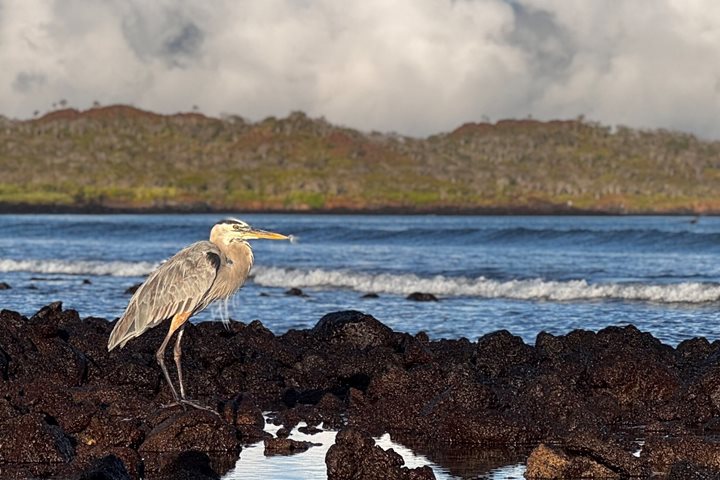Situated in the center of Galapagos, Santa Cruz is the second largest island after Isabela. Its capital is Puerto Ayora, the most populated urban center of the islands, although there are some small villages whose inhabitants work in agriculture and cattle raising. Baptized after the Holy Cross, its English name was given after a British vessel, the HMS Indefatigable. Due its location and proximity to the other inhabited island, Santa Cruz hosts the largest human population in the archipelago at the town of Puerto Ayora where the headquarters of Galapagos National Park and Charles Darwin Foundation are found.
After breakfast we landed at Puerto Ayora and after a short bus ride, we arrived at the Galapagos National Park’s breeding center. For more than fifty years this institution has been working with endemic species and reestablishing their ecosystems in order to preserve and protect the Galapagos Islands. We visited the corral of Espanola’s giant tortoises and there, Diego, the most famous living tortoise in the Galapagos, who delighted us with his tameness and curiosity. Diego has been the key to the most successful breeding program which completely recovered the devastated populations of tortoises in Espanola, which in the 1960’s was around 14 and nowadays almost 3 thousand. Like this project, there are many others not only with tortoises, but also with land iguanas. Probably one of the most interesting projects is the one that is concentrated on rejuvenating the population of the Pinta Island’s giant tortoise (the islands of lonesome George who passed away in 2012).
After we visited the tortoises, our guests had the chance to visit “Lava Java”, an organic coffee producing farm. The farm is located in the highlands making it perfect to cultivate not only coffee, but also cacao and some different kinds of fruit. We observed many coffee trees with some ripe red beans and then the complete process to produce one of the most delicious coffees of the Galapagos. Some areas were adequate to dry coffee, where fresh coffee was enclosed in a greenhouse covered by plastic. This makes it possible to produce the condensation of evaporated water from the coffee seeds and then collect it in pipes that transfer water to the tank. We observed the last part of the coffee roasting process in a semi industrial machine which was used to cool off the toasted coffee. Finally our guests had the chance to enjoy the delicious coffee while enjoying the view of Santa Cruz.
After lunch we ventured higher and arrived at “El Chato”, another farm where our guests had the chance to observe giant tortoises in their natural habitat. Along the trails many giant tortoises fed on grass of ripe fruits while in the small ponds of muddy water others rested peacefully. Afterwards we had the chance to cross an incredible lava tunnel which inside was very wide like an empty chamber, but with another smaller lava tunnel inside. The second deck of lava that formed the second tube became narrower at the end. Going inside made it possible to understand the formation of this unique place that was formed after a powerful eruption more than a million years ago.
We finally returned to Puerto Ayora, observing the sun disappear little by little, while along the streets local residents played “Ecuavolley”, an Ecuadorian version of volleyball.







